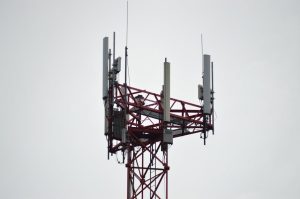
GEO satellites, or Geostationary Earth Orbit satellites, are a type of satellite that orbits the Earth at an altitude of approximately 36,000 kilometers, remaining stationary relative to a fixed point on the equator. GEO satellites have been a cornerstone of modern telecommunications, providing a wide range of services including television broadcasting, telecommunications, and data transfer.
The use of GEO satellites has numerous benefits, including global coverage, high bandwidth, and reliability. GEO satellites can cover a significant portion of the Earth’s surface, making them ideal for providing services to remote or underserved areas. Additionally, GEO satellites can transmit large amounts of data, making them suitable for applications such as video conferencing and cloud computing.
History of GEO Satellites
The concept of GEO satellites was first proposed by scientist Arthur C. Clarke in 1945. The first GEO satellite, Syncom 2, was launched in 1963, and it paved the way for the development of modern GEO satellites. Since then, numerous GEO satellites have been launched, providing a wide range of services to users around the world.
Applications of GEO Satellites
GEO satellites have a wide range of applications, including television broadcasting, telecommunications, and data transfer. They are also used for weather forecasting, navigation, and earth observation. Additionally, GEO satellites are used for military communications, providing secure and reliable communication services to military personnel.
GEO satellites are also used for disaster response and recovery, providing critical communication services to affected areas. They can also be used for search and rescue operations, helping to locate missing persons and provide emergency services.
Challenges and Limitations of GEO Satellites
Despite the numerous benefits of GEO satellites, there are also several challenges and limitations associated with their use. One of the main challenges is the high cost of launching and maintaining GEO satellites. Additionally, GEO satellites are susceptible to interference from other satellites and terrestrial systems, which can affect their performance and reliability.
Another challenge facing GEO satellites is the increasing demand for spectrum, which can lead to congestion and interference. To address this challenge, satellite operators are using advanced technologies such as beamforming and frequency reuse to optimize spectrum use and minimize interference.
Future of GEO Satellites
The future of GEO satellites looks promising, with numerous advancements in technology and innovation. One of the most significant developments is the emergence of high-throughput satellites (HTS), which offer higher bandwidth and faster data transfer rates. HTS are expected to play a crucial role in providing broadband services to underserved areas and enabling new applications such as 5G and IoT.
Another area of innovation is the development of smaller and more efficient GEO satellites, which can be launched at a lower cost and offer greater flexibility. These satellites are expected to enable new business models and applications, such as satellite constellations and hybrid satellite-terrestrial networks.
In conclusion, GEO satellites have been a cornerstone of modern telecommunications, providing global connectivity and enabling a wide range of services. While there are challenges and limitations associated with their use, the future of GEO satellites looks promising, with numerous advancements in technology and innovation. As the demand for global connectivity continues to grow, GEO satellites are expected to play an increasingly important role in providing broadband services and enabling new applications.
